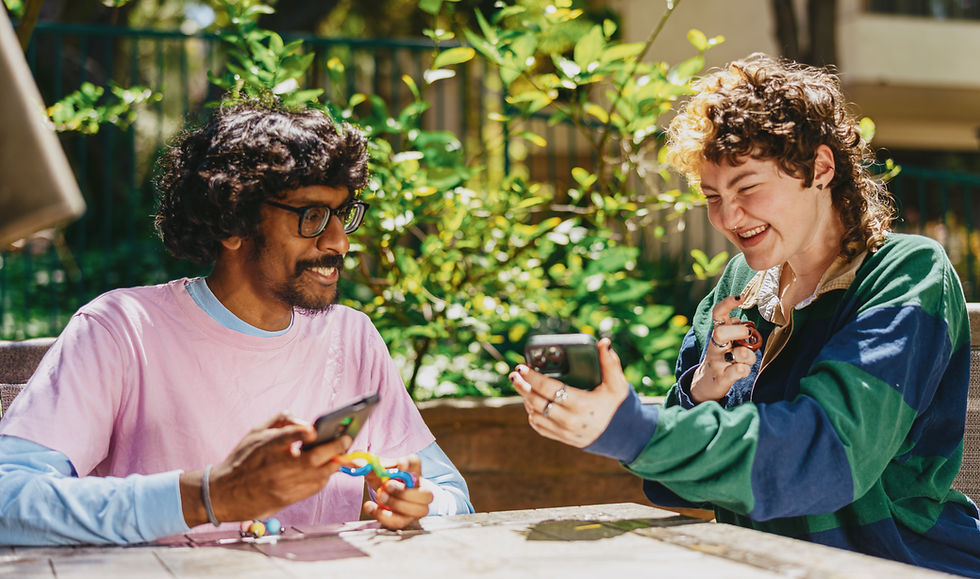Embracing Cultural Diversity in Classrooms: Creating Inclusive and Vibrant Learning Environments
- Kseniia Begma

- Jan 27
- 3 min read

Classrooms today are more diverse than ever, representing a rich tapestry of languages, traditions, perspectives, and experiences. Cultural diversity is not just a reality in modern education—it's an incredible asset that can foster empathy, creativity, and global awareness among students.
As someone who has worked closely with educators, I've seen the transformative power of embracing cultural diversity in classrooms. Let's explore how schools can celebrate this diversity and create inclusive spaces where every student feels valued and empowered.
Why Cultural Diversity Matters
Cultural diversity enriches education by exposing students to different perspectives and ways of thinking. It prepares them for a globalized world, where understanding and collaboration across cultures are essential. Beyond academic benefits, a culturally inclusive classroom promotes respect, empathy, and a sense of belonging.
However, the challenge lies in ensuring this diversity is celebrated rather than marginalized. Teachers play a crucial role in creating environments where all students feel seen, heard, and supported.
Key Benefits of Cultural Diversity in Education
1. Enhances Critical Thinking
Exposure to diverse viewpoints encourages students to question assumptions and think critically. Discussions incorporating multiple perspectives lead to deeper understanding and more meaningful learning experiences.
2. Builds Empathy and Respect
Learning about different cultures fosters empathy and teaches students to value diversity. These lessons extend beyond the classroom, shaping how they interact with others.
3. Prepares Students for Global Citizenship
Culturally diverse classrooms prepare students to navigate and succeed in a globalized world. They learn to appreciate and adapt to different cultural norms, an invaluable skill in today's interconnected society.
4. Encourages Creativity
Diverse backgrounds bring a variety of ideas and problem-solving approaches. Students benefit from this creativity, learning to collaborate and innovate in new ways.
Strategies for Promoting Cultural Diversity in Classrooms
1. Foster an Inclusive Environment
Create a classroom culture that celebrates diversity. Use visual aids like world maps, cultural artefacts, or posters representing different cultures. Pronounce students' names correctly and acknowledge their cultural celebrations to recognize and respect their unique identities.
2. Incorporate Multicultural Content
Ensure that your curriculum reflects a variety of cultural perspectives. Include books, videos, and case studies from diverse authors and sources. For example, a history lesson on World War II could explore how different countries experienced the war, offering a more comprehensive view.
3. Encourage Open Discussions
Create opportunities for students to share their cultural experiences and learn from one another. Guided discussions, cultural show-and-tells, and storytelling sessions allow students to express themselves and appreciate their peers' backgrounds.
4. Use Culturally Responsive Teaching
Adapt your teaching methods to meet the diverse needs of your students. This could include using examples and metaphors that resonate with different cultural contexts or incorporating bilingual resources for multilingual learners.
5. Celebrate Cultural Events
Mark important cultural events and festivals in your classroom calendar. Celebrating occasions like Lunar New Year, Diwali, or Hispanic Heritage Month teaches students about different cultures and makes students from those backgrounds feel valued.
6. Collaborate with Families and Communities
Engage with students' families to better understand their cultural contexts. Invite parents or community members to share their traditions and expertise with the class, strengthening the bridge between home and school.
7. Promote Multilingualism
Encourage students to share and use their home languages in the classroom. Activities like bilingual storytelling or learning greetings in different languages celebrate linguistic diversity and foster inclusivity.
Overcoming Challenges
While cultural diversity is a strength, it can also present challenges. Language barriers, cultural misunderstandings, or implicit biases may arise. Addressing these requires:
Training and Awareness: Provide professional development for teachers on cultural competence and bias.
Open Communication: Create safe spaces for students and teachers to discuss and address challenges.
Continuous Reflection: Encourage educators to reflect on their teaching practices and adapt as needed.
The Role of Educators
As educators, our role is to nurture an environment where cultural diversity is celebrated as a strength. By embracing students' unique identities and fostering mutual respect, we help create classrooms that are not only inclusive but also vibrant centres of learning.
Final Thoughts
Cultural diversity in classrooms is a powerful opportunity to broaden perspectives, build empathy, and prepare students for a globalized world. By celebrating differences and fostering inclusion, educators can create spaces where every student thrives.
Ready to Transform Your School Into a Thriving Community?
Don't let your school blend into the crowd. With a clear strategy and expert guidance, you can create an inclusive, standout school community that excels academically and earns recognition. Let's chat today to start building a legacy of excellence.




Comments